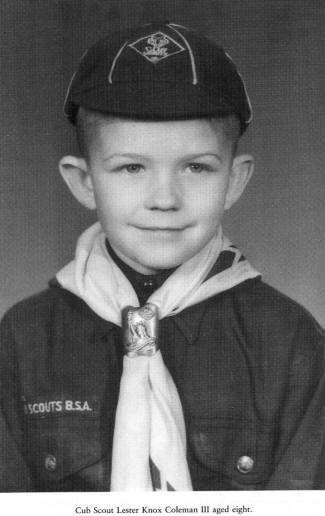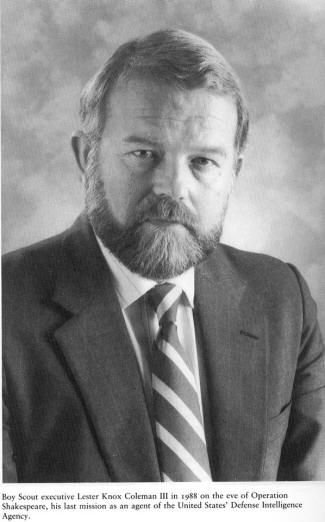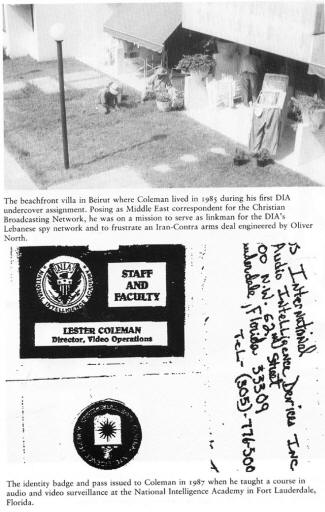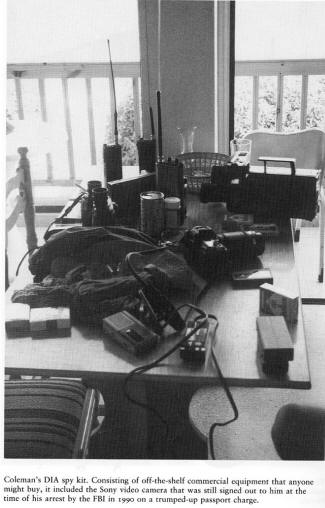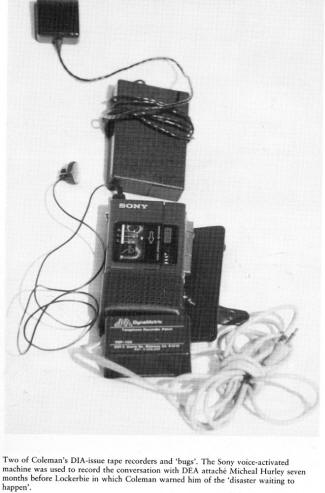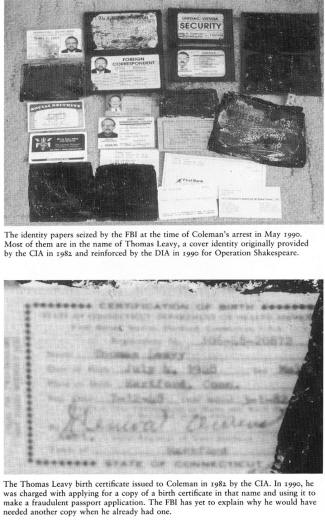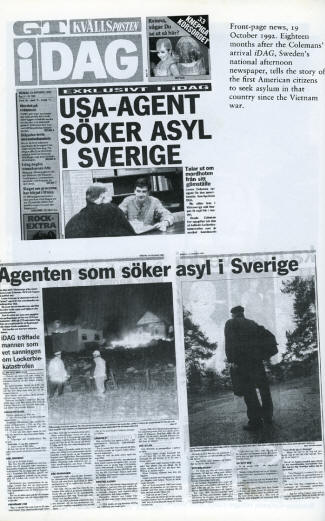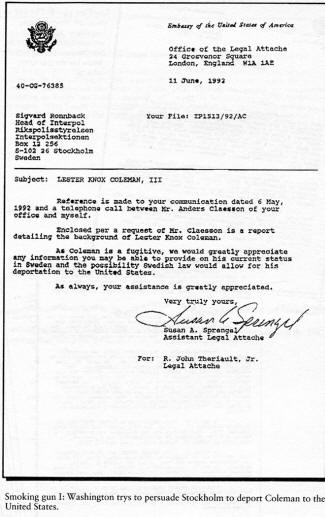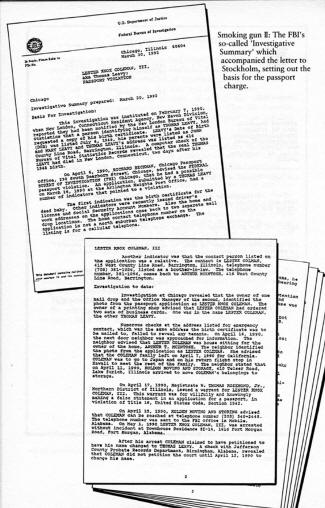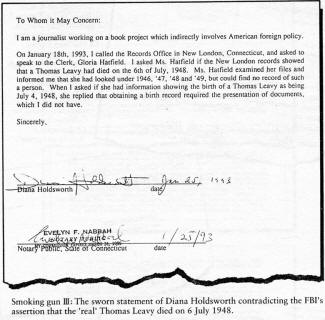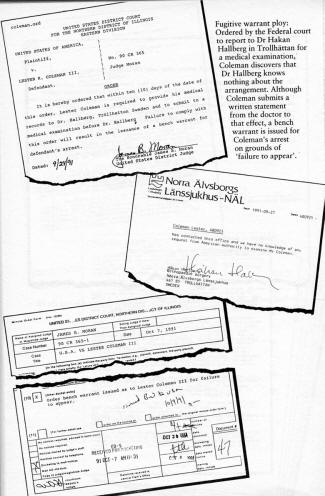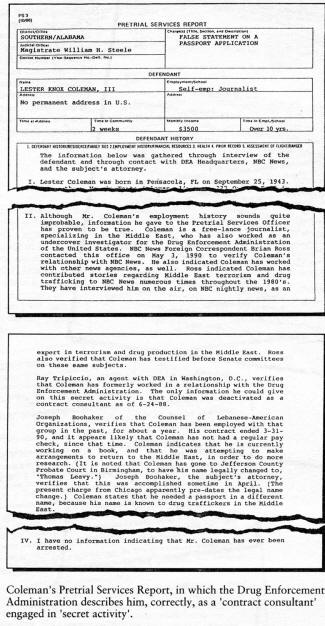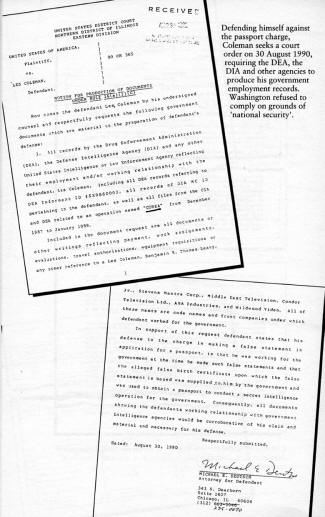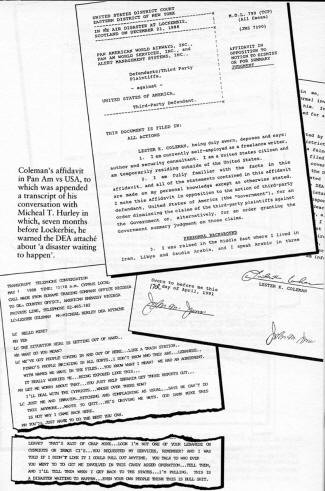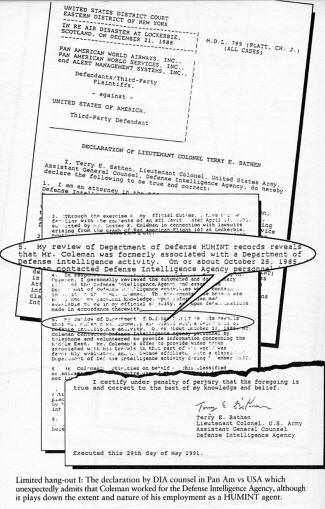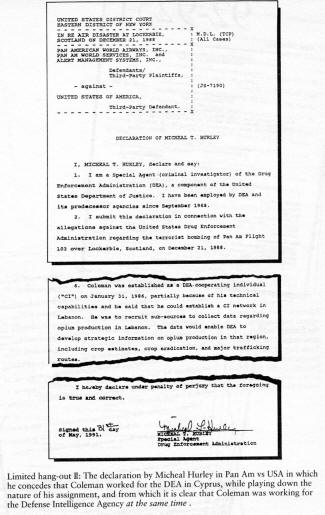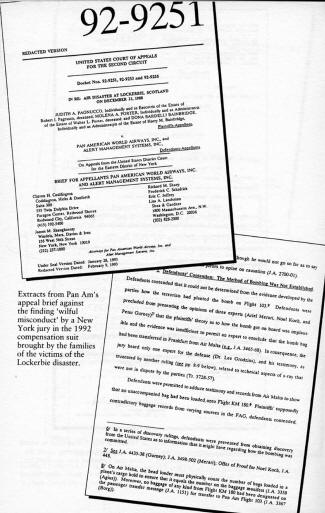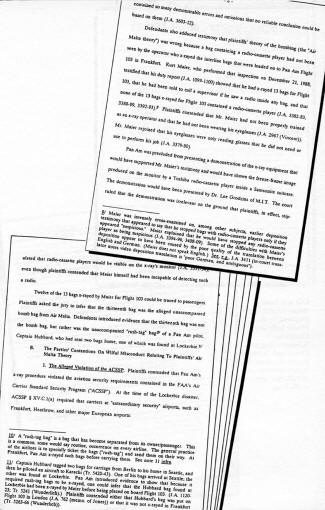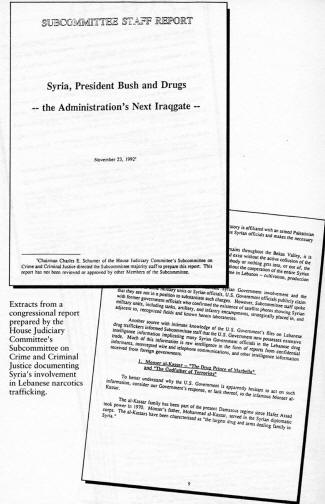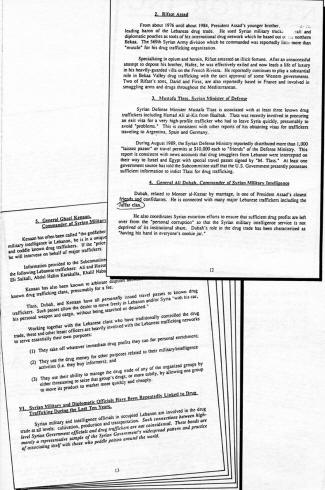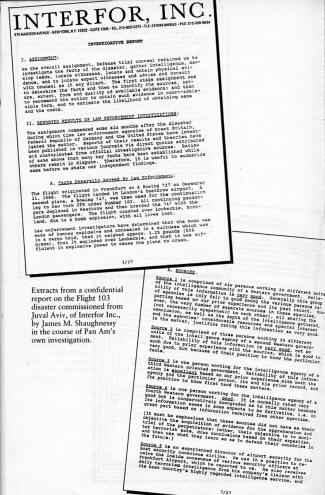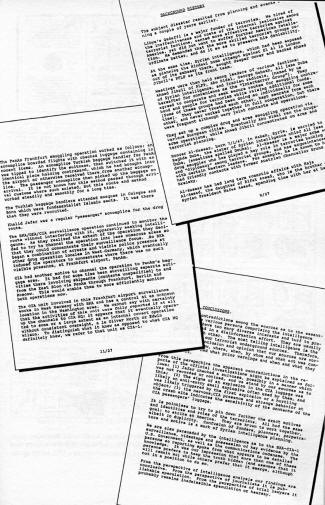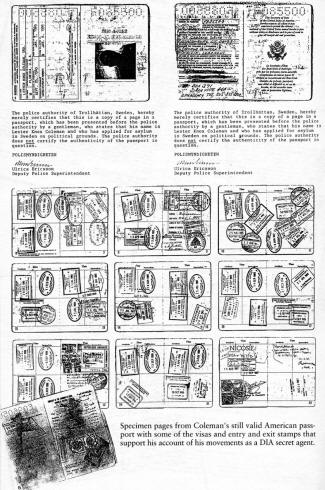In May 1993, Pan Am's appeal was heard in the U.S. Court of Appeals for the Second Circuit, and although a decision was not expected before the autumn, there seemed little doubt that the judgment against the airline in the 1992 liability trial would be set aside.
The issue had hinged on whether or not Pan Am had complied with FAA directives about the inspection of baggage. Counsel for the relatives had interpreted the regulations as requiring the airline physically to match all interline transfer bags with passengers, so that any bag not accompanied by a passenger would be identified and either hand-searched or left behind.
'To make out their liability theory,' Pan Am's attorneys argued, 'it was necessary for plaintiffs to prove that the bomb was in the suitcase, the suitcase was unaccompanied by any passenger, and the suitcase had been delivered into Pan Am's baggage system by interline transfer from another carrier, Air Malta.
'It was also necessary to show not only that Pan Am's baggage security procedure violated FAA requirements, as construed by plaintiffs, but also that Pan Am had adopted the procedure with a mindset so indifferent to safety as to constitute wilful misconduct.' (On this point, plaintiffs contended that the airline had wilfully broken the rules in order to save money and improve on-time performance.)
In its defence, Pan Am had maintained that it had not only complied with FAA requirements by making an 'administrative match' between passengers and bags, as allowed by the rules, but had also used state-of-the-art X-ray machines to inspect all interline bags, accompanied or not. (A physical match would have required passengers to go out on the tarmac and identify their bags before they were loaded aboard the aircraft, a process so time-consuming that no airline routinely performed such a match, not even El Al.)
The airline's counsel went on:
"Defendants attempted to show, but were precluded from showing, that because Pan Am believed the relevant FAA regulation to be unclear, it had obtained (or thought it had obtained) the FAA's concurrence with Pan Am's baggage security procedure. Defendants were also precluded from showing that Pan Am's X-ray inspection of interline bags was permitted by British aviation authorities, and defendants were precluded from rebutting the testimony of the plaintiffs' expert that unaccompanied bags posed such a unique risk as to make the use of X-ray inspection inappropriate.
"In addition, Pan Am set out to show, but was precluded from showing, that plaintiffs' theory of how the bomb was planted on board the aircraft was implausible and that other possibilities for which Pan Am would not be responsible were more likely."
This last point was crucial.
While fully accepting the implications of the hard, forensic evidence, Pan Am's counsel insisted that the Libyan/Air Malta theory, advanced by government and plaintiffs alike, rested on circumstantial evidence alone: namely, that the bomb bag had contained items of clothing purchased in Malta, that baggage records from Frankfurt airport purported to show that an unaccompanied bag from Flight KM180 had been transferred to Flight 103, and that a schedule prepared by the Scottish police had matched every bag with a passenger except one, the unaccompanied bag containing the bomb.
With testimony and records from Air Malta showing that no unaccompanied bag had been loaded aboard Flight KM180, and with substantial questions still unanswered about the validity of both Frankfurt's baggage records and the bag-matching schedule, in Pan Am's view, the plaintiffs' circumstantial evidence was simply not enough to establish how the bomb got aboard.
Denied access to official sources of information on grounds of 'national security', the airline had attempted to offset its handicap by calling five expert witnesses who, between them, would have discounted the Air Malta theory as both implausible and insufficiently supported by the evidence. Four of the five were not permitted to testify, however, and the fifth only on a minor, peripheral matter.
(Two of the excluded experts were British: John Horne and Peter Gurney, both with wide experience of terrorist bombings and bomb disposal operations gained in service with the British Army and Scotland Yard. Formerly in charge of the explosives section of the Yard's anti-terrorism branch, Gurney had personally disarmed a bomb intended for an El Al flight in 1986, and in 1991 had defused two IRA mortar bombs launched at 10 Downing Street.)
Worse still, at no point in the trial proceedings had Pan Am been allowed even to mention the possibility that a rogue bag might have been slipped into the system further down the line in order to bypass its security checks. Nor was it allowed to cross-examine one of the plaintiffs' own experts on the subject of 'rush-tag' bags, which, by definition, are unaccompanied by their owners.
This last turned out to be particularly damaging.
When Pan Am called Kurt Maier, operator of its baggage X-ray machine at Frankfurt on the day in question, he testified, first, that he had been told to call a supervisor if he saw a radio inside any bag, and second, that none of the 13 unaccompanied bags he screened for Flight 103 had contained a radio-cassette player. (When Maier's competence as an operator was challenged, Pan Am sought to demonstrate the X-ray machine to the jury in order to prove that anyone, trained or not, could identify a radio-cassette player from the image on its monitor, but once again, the airline was not permitted to do so.)
Maier's testimony was crucial because the plaintiffs (and the government) insisted that 12 of the 13 bags had been accounted for, and that the 13th was the one with the bomb.
Pan Am, on the other hand, contended that the 13th bag must have belonged to a Pan Am captain who had sent two suitcases home from Berlin via Frankfurt, rush-tagged to Seattle via New York, before piloting a flight to Karachi. One suitcase had unaccountably been left behind at Frankfurt. The other, containing Christmas presents for his family, was found at Lockerbie. As this was not among the 12 unaccompanied bags officially accounted for, and as all 13 had been X-rayed and cleared, the 13th bag could not, therefore, have contained the bomb.
On attempting to cross-examine one of the plaintiffs' own experts on the subject of rush-tag bags, however, Pan Am's counsel was specifically barred from asking if the 13th bag could not, in fact, have belonged to the pilot. They were also prevented from asking another of the plaintiffs' experts if it might not have been easier for a terrorist to have placed the bomb in a parcel of cargo rather than in an unaccompanied bag.
Having listed many instances where Pan Am's defence had been hampered, in counsel's opinion, by such rulings and by the improper exclusion of evidence, the airline's appeal documents then turned to those occasions when evidence for the plaintiffs had been improperly admitted. Depositions were allowed, for instance, alleging previous misconduct on Pan Am's part that had nothing to do with the plaintiffs' Libyan/Air Malta theory, and their experts were also permitted to give 'lengthy one-sided summaries of the evidence and to render expert opinions that [improperly] judged the credibility of witnesses.'
Closely reasoned, meticulously documented and including a catalogue of alleged procedural and technical errors, Pan Am's appeal brief, and the subsequent hearing in May 1993, left little doubt in anyone's mind that the original proceedings had been fatally flawed and that a new trial would be held before a different judge, probably in the spring of 1994.
Indeed, the only serious reservation expressed by legal observers about the outcome had less to do with the validity of Pan Am's appeal than with the integrity of the American judicial system under extreme government pressure. If a new trial is ordered, and if Pan Am is allowed to make its defence unhindered, the stage will be set for the final demolition of the plaintiffs' case against the airline, and with it, inevitably, the government's case against the two Libyans, al-Megrahi and Fhimah.
With a five-year cover-up to explain away, not to mention its cynical manipulation of the United Nations to engineer the imposition of international sanctions against Libya, the American government's commitment to the Libyan/Air Malta theory will subject the Federal judiciary to one of the most severe tests it has had to face since the separation of powers was written into the constitution.
If Lester Coleman's hopes are realized, the result of Pan Am's appeal may also persuade the octopus to leave him in peace at last, although, having gone to ground again in the face of Washington's vendetta, he now believes there is probably more to it than meets the eye. Since his story is now supported by no less an authority than Major Khalil Tunayb, a former chief of intelligence for the PFLP-GC, there would seem little point in continuing to harry him so relentlessly unless there were some wider reason.
(During the winter of 1992-1993, Tunayb surfaced in the media to confirm that Khalid Nazir Jafaar had been affiliated with Muslim fundamentalists in Lebanon and Detroit who knew he was working in drug operations for the DEA and CIA. According to Tunayb, Jafaar was used by the PFLP-GC as an unwitting accomplice to get the bomb bag aboard Flight 103 and had been escorted from Beirut by two equally unwitting American agents. Significantly, Tunayb's story supports much of the intelligence data provided in Juval Aviv's original Interfor Report.)
So what else did he know, Coleman wondered, that might account for Washington's unabated intent to silence or discredit him?
Looking back over his career as an American agent in the Middle East, he realized that most of his work had been concerned with tracking Syria's involvement in terrorism, hostage-taking and narcotics. In the course of his duties, he had helped compile dossiers on the likes of Rifat Assad, Monzer al-Kassar and Ali Issa Dubah which, in any civilized country without a death penalty, would have put them behind bars for life.
All else being equal ...
In fact, Rifat Assad, a vice president of Syria, returned home from exile in August 1992, and is thought to be undergoing a low-profile rehabilitation in Damascus with a view to succeeding his older brother, Hafez Assad, when the time comes. The President's health is poor, and his son, Basil, is generally regarded as too young and too lightweight for the job. As heir to the presidency, Rifat is clearly Washington 's best bet in countering the threat of a militant fundamentalist take-over on his brother's death -- and the fact that he was, or is, a CIA asset hardly undermines his qualifications!
Adding weight to the idea that the American government and its allies are lending a hand to clean up Rifat's act, the virtual disappearance of his partner Monzer al-Kassar after his arrest in Spain in the summer of 1992 neatly removed another awkward reminder of their controlling interest in America's heroin imports. (His conditional release a year later, on £10 million bail, was also a reminder of his enduring influence with the intelligence agencies of those governments.)
With Rifat's friend and colleague, General Ali Issa Dubah, promoted soon after to the post of Hafez Assad's deputy chief of staff for security affairs, and thus well clear of any further day-to-day involvement with the Syrian narcotics industry, Coleman was moved to wonder if, perhaps, he was now the last unmuzzled American witness who could testify directly as to Rifat Assad's unsuitability for any political role in the Middle East, most of all, that of America's key Arab ally.
Could it be, he asked himself, that what he knew about Lockerbie was just part of what he knew about Syria, and that what he knew about both left the whole of America's Syria-first policy open to question?
To see if a Democratic administration would take a more sympathetic view of his plight, Coleman addressed the following petition to President Bill Clinton, with a copy to the new Attorney-General, Janet Reno:
"'Mr. President,
"I spent two years assigned to the White House as a radio correspondent during the Carter administration. My work has been recognized with two Emmys and several other national reporting honors.
"In the mid-80's, I left journalism and became involved with two government agencies, the DIA and the DEA, affiliated with classified activities in Lebanon. My background in the Middle East was of interest to my government. I grew up in Iran and Libya, for example.
"I witnessed conduct within the US DEA in particular that was not conducive to operational security. I still feel this lax security at DEA Country Office Nicosia may have contributed to the bombing of Pan Am 103. I gave an affidavit, April 1991, that I observed a Lebanese, later identified as Khalid Jafaar, at a DEA office where I was working in 1988, six months prior to the bombing. Jafaar was killed on 103. DEA has repeatedly denied Jafaar had any connection with them.
"On May 2, 1990, I was arrested for making a false statement on a passport application, using a birth record provided to me by the US government. We now have conclusive evidence that this arrest was directly related to my knowledge of DEA's activities that may have been compromised by elements linked to the Pan Am bombing.
"My wife, children and I were subsequently harassed. Death threats were made to us, and I was warned by a DEA agent directly not to get DEA involved in my case.
"In 1991, in fear of our lives, we fled the USA and sought sanctuary in Sweden. I left the USA legally, with permission of the U.S. District Court in Chicago. After our arrival here, the FBI continued harassment by faking a doctor's appointment before the court. The doctor the FBI stated they had appointed declared that he was never contacted by the United States government. I complied with the terms of my bail release, reporting to pre-trial services biweekly up until the FBI's false doctor's appointment episode. Afterwards, I asked, and received, protection from the Swedish authorities for me, my wife and three children.
"We have since obtained a copy of a FBI file which was leaked by closet patriots within the Bureau. This file contains false statements about me regarding the passport case pending in Chicago.
"We have been waiting patiently, Mr. President, for the appointment of a new Attorney General who will hopefully clean out the gross misconduct under the Bush administration, which includes persecuting this American citizen, forced to flee his homeland.
"I request that Attorney General Janet Reno investigate this matter. We wish to return to America but will not do so until the United States government stops persecuting us, drops the charge in Chicago and shall look upon me as a witness, not a fugitive.
"A book entitled 'Trail of the Octopus' documenting the events of the last three years shall be published this fall. I hope your administration will extend an olive branch and distance itself from the conduct of a morally corrupt Bush Justice Department and arrange for us to come home."
Coleman sent his petition by fax, the machine confirming that the transmission had been received, and provided a fax number to which the White House could reply.
That was on 15 March 1993.
By mid June, having heard not a word, the Coleman family resigned itself to a life on the run.

